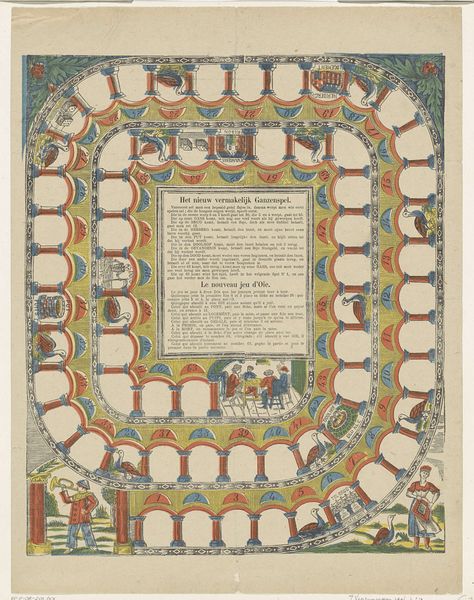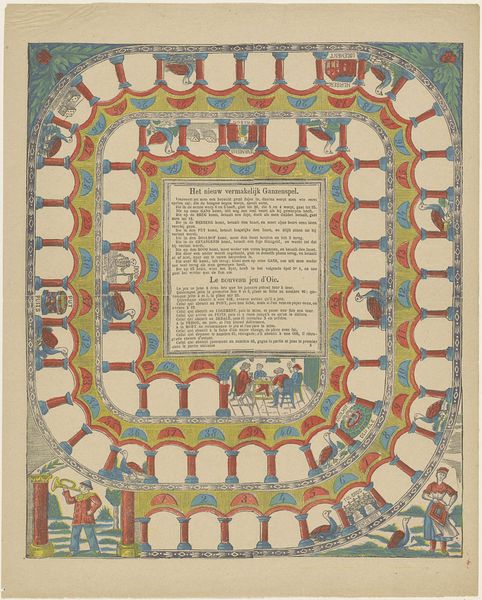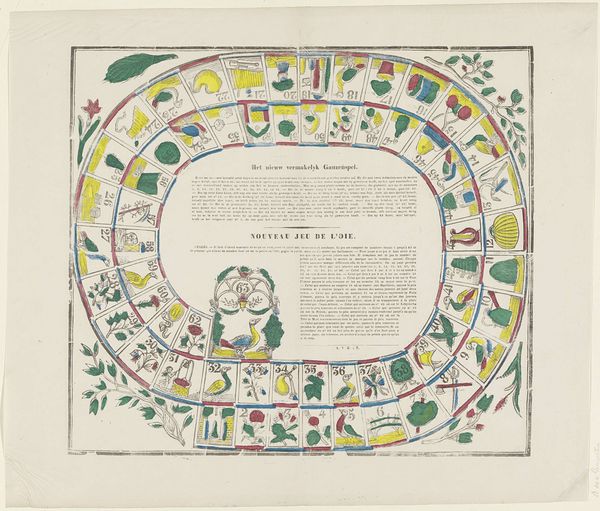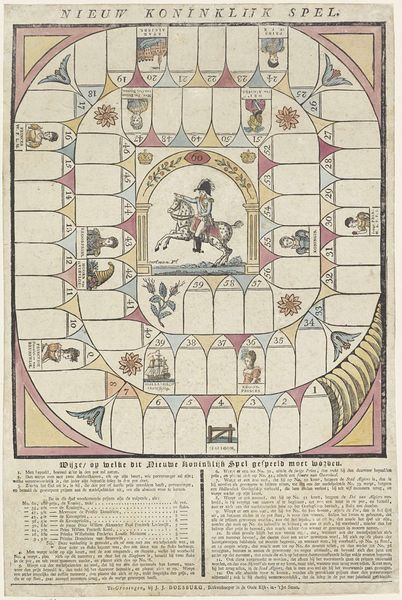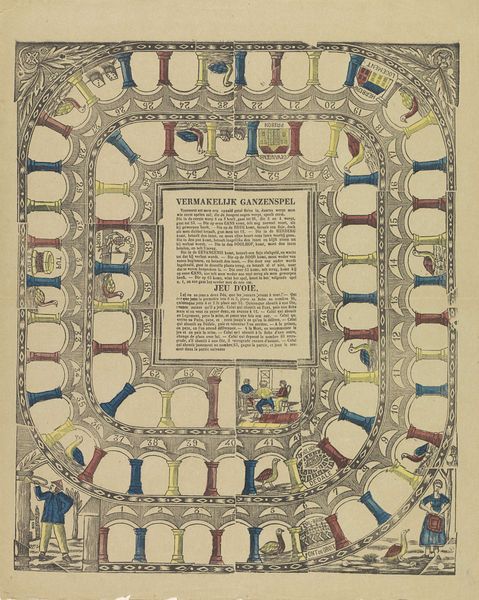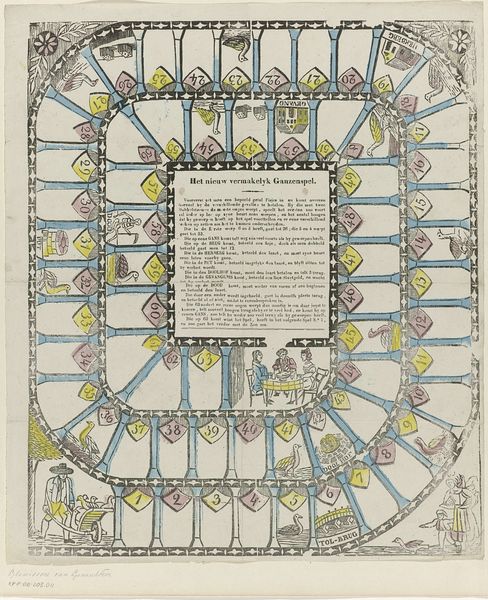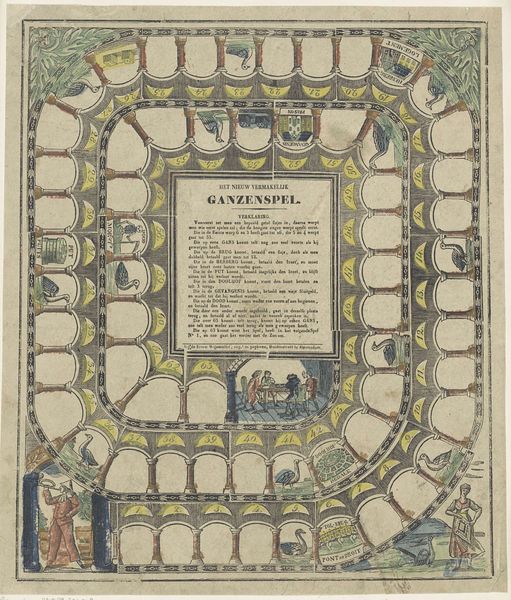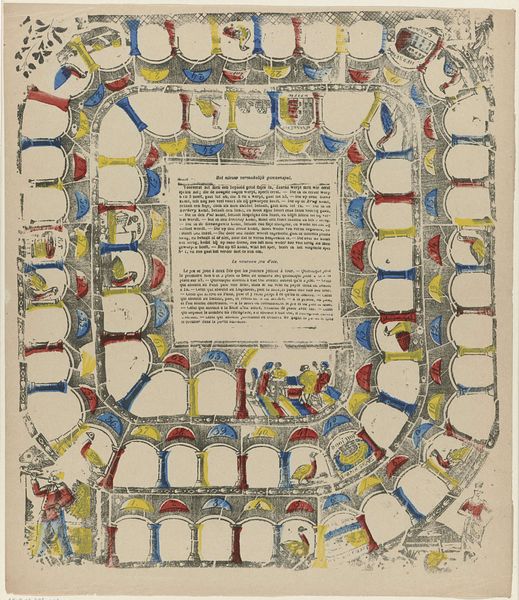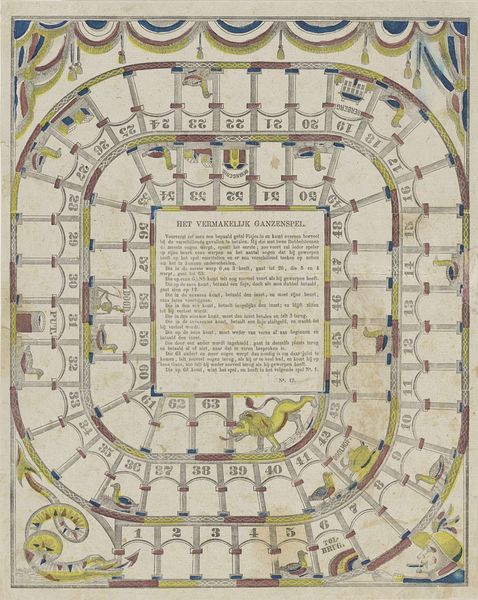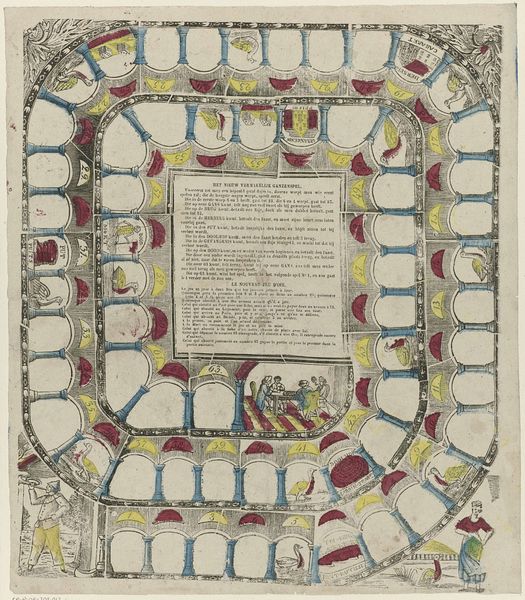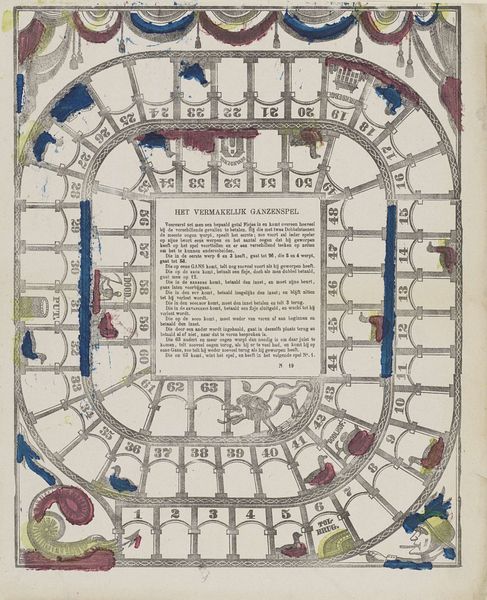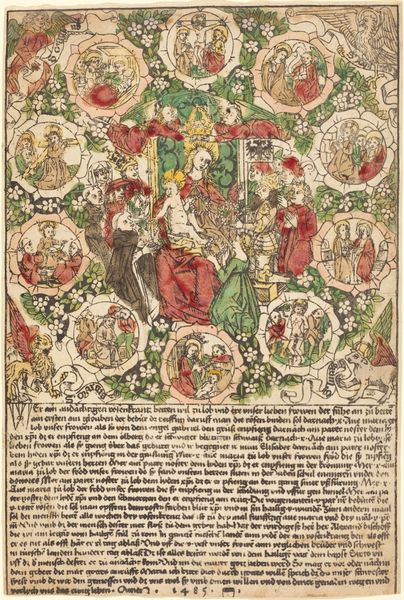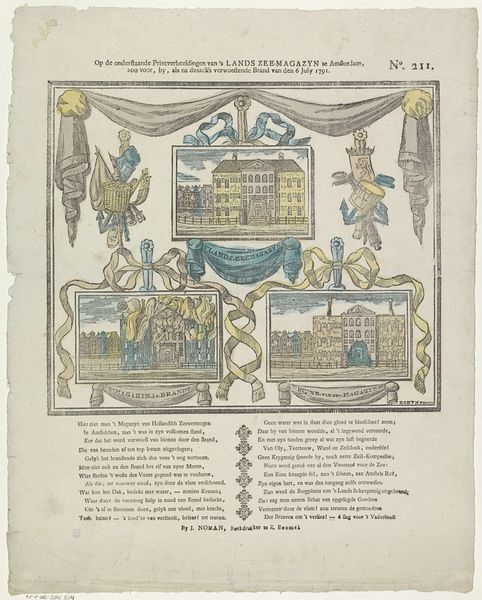
graphic-art, print
#
graphic-art
#
narrative-art
# print
#
genre-painting
#
academic-art
#
decorative-art
Dimensions: height 616 mm, width 478 mm
Copyright: Rijks Museum: Open Domain
Curator: This artwork is “Ganzenbordspel,” or Game of the Goose, created around 1870 by G. Theod. Bom. It’s a printed game board now housed in the Rijksmuseum. What captures your attention most about this particular example? Editor: It feels like stepping into a storybook. The illustrations framing the game path seem like little windows into another world, or almost a series of medieval illuminations! But it is strange to see these framed spaces representing numbers, which transforms the symbolic into something quite mundane. What stories can this "Ganzenbordspel" tell us? Curator: That juxtaposition of the mundane and symbolic is key. Games like this, immensely popular for centuries, reflect deep cultural anxieties and aspirations. Notice how often imprisonment, fate, and even death appear within the illustrated scenes around the periphery. These motifs carry substantial weight! Editor: You're right! The presence of a prison is pretty alarming. Is the game intended to communicate particular values to players? Curator: Indeed. Think of it as a miniature map of life’s trials. The goose itself, appearing on numerous squares, traditionally symbolizes prosperity and good fortune. It offers repeated chances for advancement. But the hazards scattered throughout – the bridge, the inn, the well – represent moral pitfalls or simple bad luck. Do you think those pictorial metaphors resonate even today? Editor: Absolutely, the tension between opportunity and risk, progress and setback, is a timeless theme. I like the way the illustrations invite you to imagine narratives unfolding. I hadn’t thought about this being a sort of cultural primer, communicating a community's shared value. Thank you! Curator: My pleasure! It is in this dance of symbol and action where history comes alive!
Comments
No comments
Be the first to comment and join the conversation on the ultimate creative platform.
